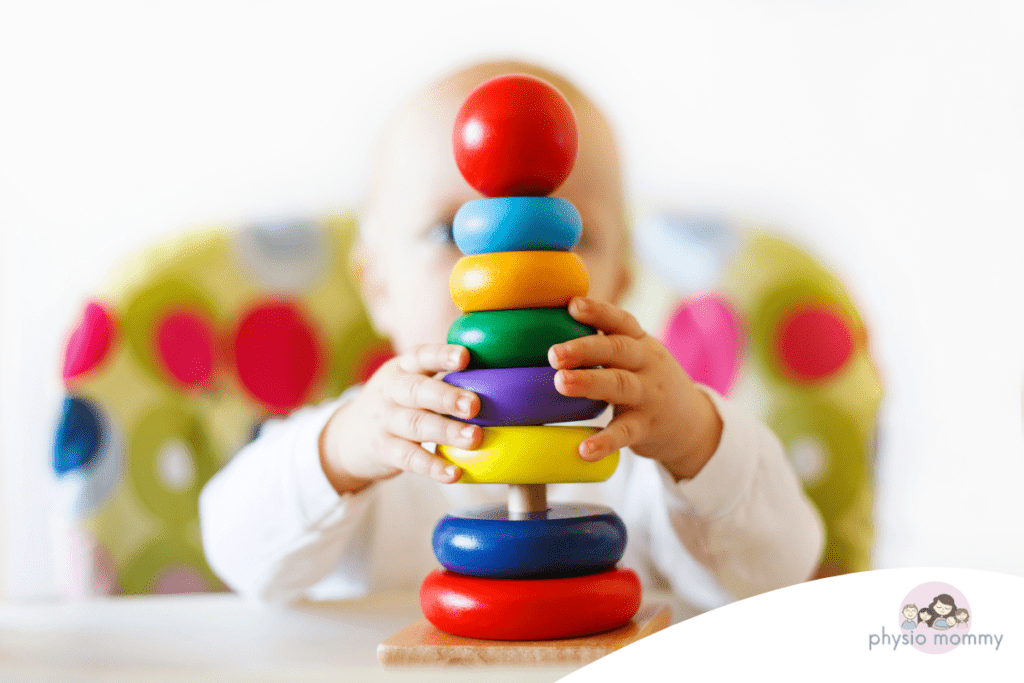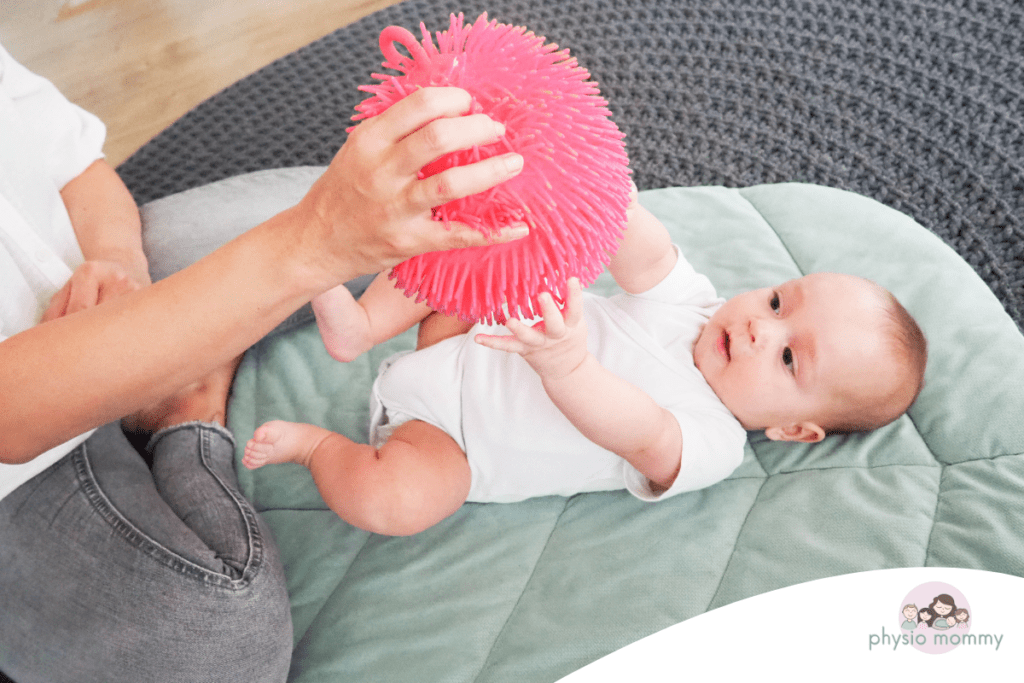There is a really hectic time ahead of us. Christmas is coming, and along with it… shopping madness begins as well.
You have probably noticed that now even more toys start to appear on the shelves and displays in shopping windows. It’s almost as if they are competing with each other as to which of them is more “educational” and better for development…
And everything would be wonderful if it wasn’t for the fact that, unfortunately, there is a lot of marketing strategy and playing on our (not-always-aware-of-it parents) heartstrings involved in all of this.
Just to be clear – I don’t believe toys are bad. Quite the opposite! If well-chosen, they have incredible potential, as they can become a driving force for a particular activity. However, if the message provided by manufacturers makes parents feel that without buying a certain product, they are not taking good enough care of their child, then this is a definite wrongdoing in my eyes.
I know that sometimes finding your way through the maze of all sorts of information (especially when shopping under time pressure) is not easy… That’s why, I want to show you the basic toy-related ABCs and try to answer the following questions:
- Are noisy and flashing “educational” toys any good?
- When should you introduce toys to your baby?
- What toys support a child’s development?
LET’S TALK ABOUT TOYS
There is no doubt that playtime is something essential for proper development. It builds creativity, encourages interaction with other people, helps to discover the world and all the relations that exist within it. It also supports cognitive, social, emotional, psychomotor and linguistic development. At the same time, it is exciting and can give a lot of joy. So basically, it’s pleasant and useful!
Toys, undoubtedly, can contribute to a successful playtime.
However, it is worth mentioning that the concept of a toy has evolved over the years, so much that from an ordinary object, it has become something crucial for the development of a child’s brain. And we all know how it works – brain development and education are effective marketing tricks…
That’s why, if I had to summarize it in one sentence, I would write as follows: Yes – toys are important, but only when they serve as an aid to establishing a relationship with another human being, and in later stages, also encourage the child to play independently and creatively.
Are noisy and flashing “educational” toys any good?
Interactive toys may be seen by parents as essential to progress. But is that really the case?
Turns out it’s not. Research says that using such toys reduces the amount of interaction with the caregiver, and that children vocalize less when playing with them.
Imagine, for example, a teddy bear reading a story to your baby. Although the idea itself is not bad, when we analyze the behavior of the child who is being read to by their parent, we will quickly notice that the point here is not just a “polite” listening to the story.
When we read with our child, we show pictures, make eye contact… The little one builds a connection with us, looks at us to make sure that we can see and understand what he or she wants to show us… When reading “live”, we can change the tone of our voice, gesture, use facial expressions and, most importantly, react to the child’s behavior… Perhaps there is a passage that particularly caught their attention? We can go back and read it again! This experience is something that an electronic toy is not able to give us.
Manufacturers often advertise interactive toys as SENSORY, so those stimulating multiple senses…
I agree. Such toys stimulate the senses but it is always good to ask yourself two questions:
- whether these are the senses that play a key role in a baby’s development and…
- does more really mean better.
Toys that make sounds or blink have a strong effect on the external senses – mainly sight and hearing. Meanwhile, the key, so-called FOUNDATIONAL SENSES are those that allow the child to get a better sense of their body and find themselves within the force of gravity. These are the ones that, in a way, give the baby a sense of physical identity. This is important because it is the foundation of a sense of security – so crucial for a harmonious development.
I talk more about these senses here: >>FOUNDATIONAL SENSES<<.
So does MORE really mean BETTER?
Given the immaturity of a young child’s nervous system, too much exposure to stimuli can easily overstimulate them, which – as you can probably guess – is not beneficial at all.
What’s more, noisy and flashing toys provide strong stimulation to the right hemisphere of the brain. Meanwhile, it is the left hemisphere that is responsible for speech development.
But isn’t it true that studies confirm the beneficial effects of toys on the process of development?
Yes, it is! But these studies were conducted mainly when children were playing together with their caregivers.
When should you introduce toys to your baby?
In fact, they can be introduced from the first months of life, provided that they are meant to encourage shared playtime with mom or dad. Newborns will not yet show interest in objects but as the adaptation period passes, toys will become more and more appealing.
At around 3rd or 4th month of life, toys can already effectively motivate the child to perform certain activities.
What toys support a child’s development?

Toys that are adapted to the age and capabilities of the baby. Those that stimulate creativity, provide a challenge and motivate to find solutions. Also, those that encourage collaborative playtime with other people.😊
These can be symbolic toys (i.e. those encouraging imitation), the ones supporting manipulative skills (e.g. blocks, puzzles), art-related toys (e.g. crayons, paints, clay…), language/conceptual toys (e.g. card games, board games…) or those that support large motor skills (bikes, pushers, slides).
To sum up:
- Choose toys that are suitable for your baby’s age and capabilities. It is useful if they are half a step ahead of the child – then they can stimulate creativity!
- If you want your child to show interest in a toy for a longer period of time, limit the number of toys. Studies show that children who had simultaneous access to 4 toys enjoyed playing with them longer and more creatively than children who could use 16 different accessories at the same time. Too many toys makes it harder for the child to focus on only one of them.
- Remember about habituation, i.e. getting used to a stimulus. Your child may get bored with a toy after a while, so it is good to change them. If you have a lot of toys, hide some of them in a box and come back to it after some time. When exactly? It depends on your child! The youngest babies might need a more frequent exchange (for example, two times a day). Older children may need it once or twice a week.
- The most important thing for the youngest babies is to let them play with their own bodies! In order to get to know and feel themselves well, the little ones need to experience movement. That’s why, rock together, roll over, massage… This is a real feast for the senses! (You can find some interesting ideas for such playtime activities in PHYSIO-BABY-GYMNASTICS.

The content herein is for informational purposes only and will not replace a visit to a physiotherapist or other specialist. If in doubt, please consult with a professional who can examine your baby in person. For the sake of your baby, I do not provide online advice.
For great ideas for spending time and playing with your baby, check out my E-book:
Sources:
- Aleeya Healey, Alan Mendelsohn, COUNCIL ON EARLY CHILDHOOD, Jill M. Sells, Elaine Donoghue, Marian Earls, Andrew Hashikawa, Terri McFadden, Georgina Peacock, Seth Scholer, Jennifer Takagishi, Douglas Vanderbilt, P. Gail Williams; Selecting Appropriate Toys for Young Children in the Digital Era. Pediatrics January 2019; 143 (1): e20183348. 10.1542/peds.2018-3348.
- Carly Dauch 1, Michelle Imwalle 1, Brooke Ocasio 1, Alexia E. Metz 2: The influence of the number of toys in the environment on toddlers’ play. Infant Behavior and Development Volume 50, February 2018, Pages: 78-87.
- Spitzer M., Cyfrowa demencja. W jaki sposób pozbawiamy rozumu siebie swoje dzieci, Dobra Literatura, 2013.
Sharing my content with your friends would mean the world to me. Thank you! ❤️